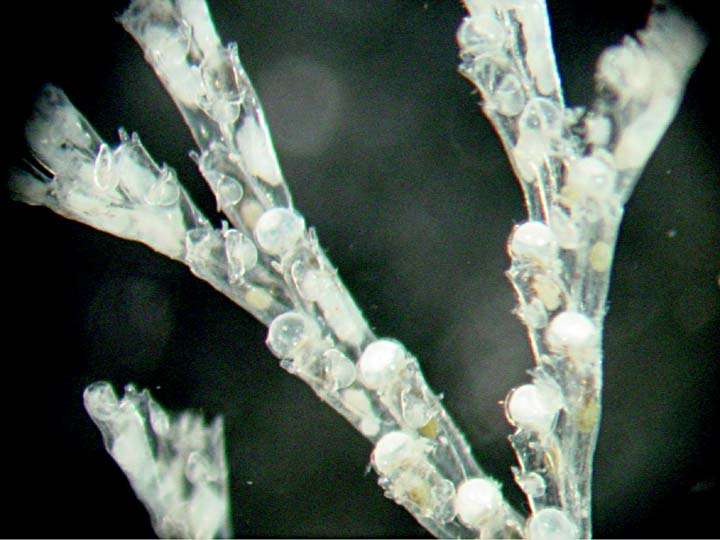Bugula stolonifera Ryland, 1960
Bryozoans are colonial animals made up of tiny individuals called zooids. Each zooid is protected by a small chamber called a zooecium. The zooecia are linked together to form branching colonies, such as in this species, leaf-like masses (as in Watersipora), or encrusting colonies (such as Cryptosula). From each zooecium, a zooid can extend its feeding tentacles through an opening known as an aperture. This photo shows the avicularia, named for their resemblance to the head and neck of a bird, at the outer corners of the houses. This position of the avicularia is an identifying characteristic, and helps to distinguish this species from similar species, B. pacifica and B. californica. Darwin described the avicularia of Bugula in The Origin of Species, stating that "they curiously resemble the head and beak of a vulture in miniature, seated on a neck and capable of movement." Avicularia are modified and variable in other bryozoan groups, so do not always have this bird-like appearance (e.g., Scrupocellaria, Schizoporella). All have a pivoting mandible like the vulture's "jaws" in Bugula, though most do not have the stalked "neck" that gives them the bird-like appearance described. Avicularia probably serve a protective function, preventing other small animals from attaching to and possibly fouling the colony.

